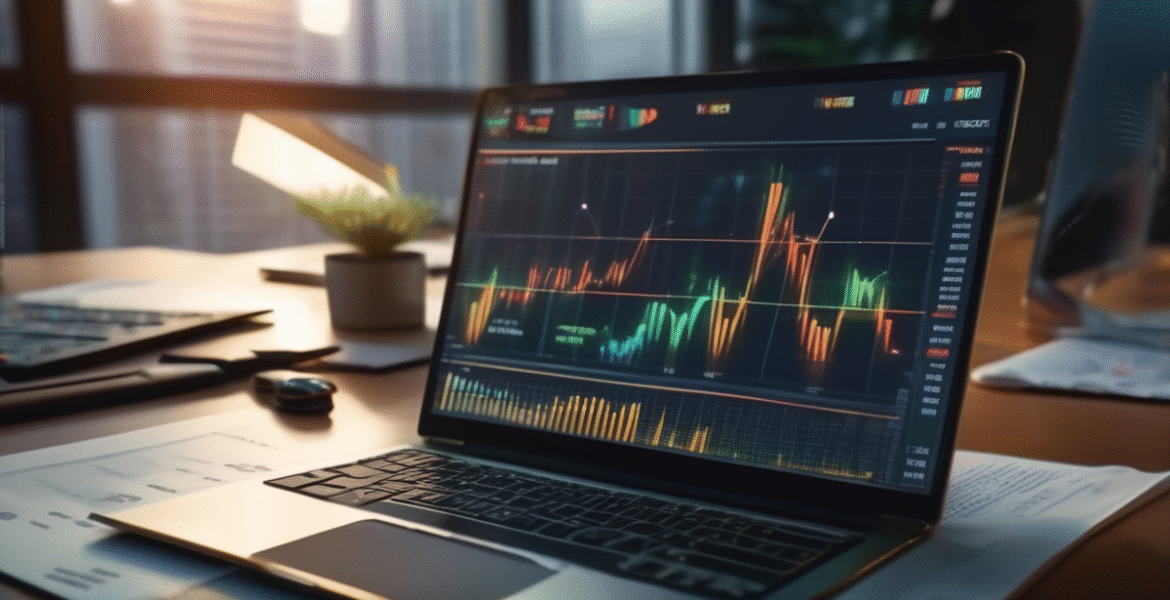
Investing in the 2020s: Trends and Opportunities
On June 6, 2025 by Dip Admin StandardInvesting in the 2020s: What Trends Should Be on Your Radar?
The world of investing is constantly shifting. It can feel overwhelming, right? Especially now, as we navigate new economic landscapes and technological advancements. Figuring out where to put your money can feel like trying to predict the future, but honestly, it doesn’t mean you have to be a fortune teller. It’s more about understanding the currents shaping the world and positioning yourself to ride those waves. So, let’s talk about some of the major trends that could impact your investments in the 2020s. We’re not going to get bogged down in the weeds here; we’re focusing on the big picture, the “why” behind the trends, not necessarily the nitty-gritty “how.”
The Rise of Sustainable Investing
Sustainable investing, also known as ESG (Environmental, Social, and Governance) investing, is no longer a niche concept. It’s becoming a mainstream consideration for many investors – and for good reason. People are increasingly aware of the impact businesses have on the planet and on society. They’re actively seeking out companies that prioritize sustainability, and honestly, it makes sense. Companies focused on environmental responsibility, ethical labor practices, and strong corporate governance tend to be more resilient in the long run. They’re better positioned to weather regulatory changes, attract and retain talent, and ultimately, build lasting value. Think about it – a company polluting a river is going to face a lot more scrutiny (and potentially fines) than a company actively working to reduce its carbon footprint. That scrutiny can hit their bottom line. The core concept here is aligning your investments with your values, but the bonus is that it can also be a smart financial move. Ever wonder why that is? Well, companies committed to sustainable practices are often thinking long-term, which, in theory, aligns with the goals of long-term investors.
Technology’s Unstoppable March
Okay, this probably isn’t a surprise to anyone, but technology is still a massive trend to watch. We’re not just talking about the usual suspects like artificial intelligence (AI) and cloud computing, although those are huge, obviously. We’re talking about how technology is disrupting practically every industry out there. Consider how e-commerce has reshaped retail, how streaming services have revolutionized entertainment, or how fintech is changing the way we bank and manage our money. These disruptions create both opportunities and risks for investors. The potential benefits are significant – companies that successfully leverage technology can experience rapid growth and high returns. But there’s also a lot of volatility and uncertainty in the tech sector. New technologies emerge constantly, and some companies will inevitably fail to adapt. So, yeah… picking the winners and losers can be tough, but broadly speaking, understanding how technology is reshaping industries is essential for anyone investing in the 2020s. Think about investing in cloud computing, for example. Businesses are moving their operations online, which means they need cloud services, which, in turn, boosts the demand for companies in that sector.
The Changing Demographics
Demographics – the statistical characteristics of populations – might sound dry, but honestly, they have a huge impact on economic trends and investment opportunities. We’re seeing several major demographic shifts happening globally. An aging population in many developed countries is creating a growing demand for healthcare services and retirement-related products. At the same time, the rise of the Millennial and Gen Z generations as economic powerhouses is shaping consumer preferences and driving demand for different types of products and services. And then you have the increasing urbanization in developing countries, which is creating a massive need for infrastructure development and housing. These are big shifts. The key takeaway here is that understanding demographic trends can help you identify industries and companies poised for growth. For example, the increasing focus on health and wellness among younger generations might make investing in health-focused companies a potentially good move, or it might not. The point is, these are factors worth considering. Anyway – what matters is paying attention to these demographic shifts and trying to understand the implications for different sectors of the economy.
Fun Facts & Trivia
- It’s interesting to note that ESG funds have seen significant growth in recent years, suggesting a growing investor appetite for sustainable investments.
- A surprising fact is that the global AI market is projected to reach trillions of dollars in the coming years, highlighting the immense potential of this technology.
- You might be surprised to learn that the oldest members of Gen Z are already entering the workforce and starting to shape consumer trends.
Inflation and Interest Rates
Let’s talk inflation – it’s been all over the news lately, right? And honestly, it plays a massive role in the investment landscape. Inflation erodes the value of your money over time, so what costs $100 today might cost $110 next year if inflation is at 10%. This directly impacts investment returns because you need your investments to grow faster than the rate of inflation just to maintain your purchasing power. Then there’s the whole thing with interest rates, which are closely tied to inflation. Central banks often raise interest rates to try and curb inflation, which can impact the stock market and other asset classes. Honestly, navigating an inflationary environment can be tricky. Some assets, like real estate and commodities, can act as a hedge against inflation. But higher interest rates can also make borrowing more expensive for companies, potentially slowing down economic growth. It’s a bit of a balancing act, and it’s something every investor needs to keep in mind. To be fair, understanding the relationship between inflation, interest rates, and different asset classes is crucial for making informed investment decisions in the 2020s. So, yeah… it’s a complex picture, but one that’s worth grappling with.
Geopolitical Risks and Global Interdependence
Honestly, you can’t ignore the global stage when you’re talking about investing, and that’s a lesson I learned the hard way once. Geopolitical events – conflicts, trade wars, political instability – can all have ripple effects on the global economy and financial markets. We live in a highly interconnected world. A disruption in one region can quickly spread to others, impacting supply chains, commodity prices, and investor sentiment. For instance, a trade war between two major economies can hurt businesses across the globe, leading to lower profits and stock prices. Political instability in a country that produces a key commodity, like oil, can drive up prices and impact energy companies and consumers alike. The pandemic also really highlighted just how interconnected everything is, right? So, yeah, honestly, it’s about staying informed about what’s happening in the world and understanding how those events could potentially impact your investments. Now, I’m not saying you need to become a geopolitical expert, but keeping an eye on major global trends is a smart move. Ever wonder why diversification is so important? Well, this is part of the reason – spreading your investments across different asset classes and geographic regions can help mitigate the risks associated with any single geopolitical event.
Conclusion
Investing in the 2020s is all about navigating change. We’re seeing shifts in technology, demographics, global politics, and economic conditions, and these shifts create both opportunities and challenges. Honestly, the key takeaway is that staying informed, adapting to new trends, and diversifying your portfolio are crucial for long-term investment success. Sustainable investing is no longer a fringe concept; technology continues its relentless march forward, disrupting industries and creating new opportunities; and demographic shifts are reshaping consumer demand. Honestly, understanding these big-picture trends is more important than chasing the latest hot stock tip. It’s about building a solid foundation for your financial future, one that can weather the inevitable storms and capitalize on the long-term opportunities. One thing I’ve learned the hard way is that there are no guarantees in investing, but being prepared and informed certainly improves your odds.
FAQs
What is sustainable investing and why does it matter?
Sustainable investing considers environmental, social, and governance (ESG) factors alongside financial ones. It matters because it aligns your investments with your values and often leads to long-term financial resilience.
How can technology impact my investments in the 2020s?
Technology can disrupt industries and create growth opportunities. Keeping up with technological advancements helps identify sectors and companies poised for potential expansion.
Why should I care about demographic trends when investing?
Demographics shape consumer demand and workforce dynamics. Understanding these shifts helps anticipate future needs and target investments toward emerging markets or aging populations.
